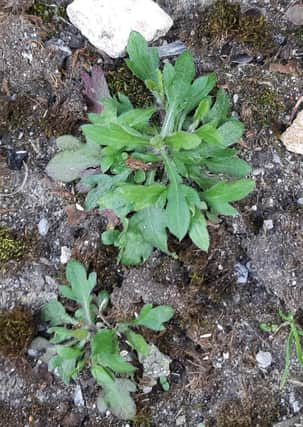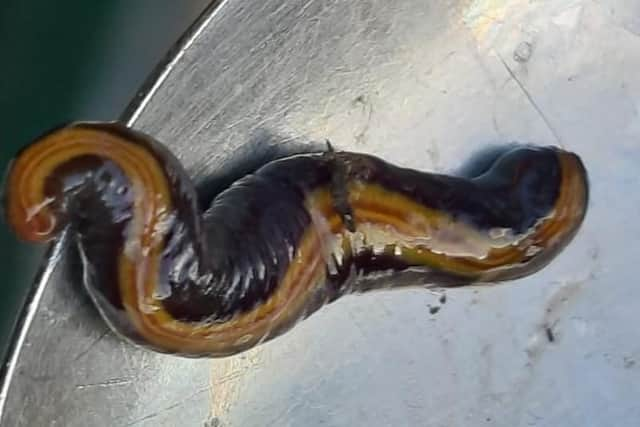Fascinating citizen science taking place in Sheffield community


Founded by Lera Miles and botanist Gerry Firkins and helped by many local residents the group are building a database of all the living things they find. The records are all available on www.inaturalist.org/. An accurate app is used to help identify species along with the expert knowledge in the group, and the scientific community on inaturalist confirm the identification.
Gerry said: “Since we started in March 2020 we have 344 observations covering 210 species (fauna and flora). Two types of flatworms are new to Sheffield: and a saxifrage is new to the city area.”Gerry has been surveying the roads for wild or self-seeded plants. This has turned up 71 species so far with more ground yet to cover. One of the surprising finds was Rue-leaved Saxifrage.
Advertisement
Hide AdAdvertisement
Hide AdThis is a plant of rocky outcrops more usually seen in Derbyshire. Checking the distribution around the country it did appear in some cities, but there were no records for Sheffield city at all! By alerting other botanists it has also been spotted on another road in Sheffield. Eight plants have been found altogether. Who knew the Groves was such a special place!


I asked Gerry if the council spraying of Glyphosate is damaging this biodiversity. He said the council had recently sprayed the gutters in the area but not the border of the pavement, where most of the wildflowers grow. I wondered why The Groves are treated differently to my street as poppies growing on my pavement border were all killed when the council came to spray.
The particularly interesting, but also worrying find, have been the flatworms. A delivery of compost turned out to contain a tiny yellow-striped flatworm originating from Australia. Another species of Australian flatworm was later found in the garden. Both eat other small animals, including earthworms. The Australian flatworm is rare but well known now in the UK, but the yellow-striped is a newer arrival. This is the most northerly record as yet and only a handful have been recorded in the UK. They look somewhat like flattened slugs with no visible head and shelter under rocks.
These records have been shared with the non-native Species Secretariat who monitor new species arriving in the country.
Advertisement
Hide AdAdvertisement
Hide AdOur native earthworms are the gardener’s best friend. They recycle nutrients, eating dead plants and leaves and turning them into worm castings which contain 5 times more nitrogen, 7 times more phosphorus and a thousand times more beneficial bacteria than the original soil. They also improve the soil structure, leaving space for water to drain and be stored. Worms even clear up our pollution. They can improve contaminated land by enhancing “bioremediation”. Their wriggling and burrowing movements regulate the distribution of microorganisms in the soil which break down the toxic materials. Worms are also a vital food for many animals.


A greater spotted woodpecker has been drumming nearly every morning for the last three weeks. As it is moving from tree to tree to do this, it’s unlikely to be nest building but more likely trying to attract a mate.
The frogs have been to most ponds now and frogspawn is in abundance. Some 42 adults were seen in one pond. It was a noisy affair! Please don’t share frogspawn/tadpoles with other gardens. There is a virus spreading around the UK causing frogs sores, blisters and even death.
Despite being larger as adults, frogspawn and frog tadpoles fall prey to the smooth newt that lives in the Groves.
Advertisement
Hide AdAdvertisement
Hide AdAs our climate changes it is important we monitor bio-diversity to identify species that may be declining and invasive species that may have undesirable effects on natives. The Groves is a brilliant resource that will help monitor this, as well as encouraging wildlife gardening to increase biodiversity. Visit www.inaturalist.org/projects/the-groves-sheffield.